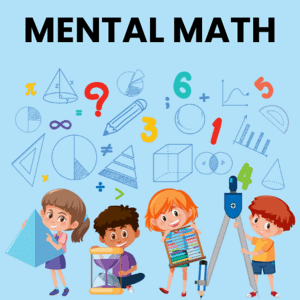Past Year Questions: Trusses | Topic wise GATE Past Year Papers for Civil Engineering - Civil Engineering (CE) PDF Download
Q1: The plane truss shown in the figure has 13 joints and 22 members. The truss is made of a homogeneous, prismatic, linearly elastic material. All members have identical axial rigidity. A to M indicate the joints of the truss. The truss has pin supports at joints A and L and roller support at joint K. The truss is subjected to a 10kN vertically downward force at joint H and a 10kN horizontal force in the rightward direction at joint B as shown The magnitude of the reaction (in kN ) at the pin support L is (rounded off to 1 decimal place). [2024, Set-1]
The magnitude of the reaction (in kN ) at the pin support L is (rounded off to 1 decimal place). [2024, Set-1]
Ans: 7 to 8
Sol: Considering left portion of section 1-1
Considering left portion of section 1-1
ΣMD = 0
⇒ VA × 2 - HA × 2 = 0
⇒ VA = HA
Considering right portion of section 2-2
ΣMI = 0
HL × 2 = 0
HL × 2 = 0
Considering left portion of section 2-2
ΣMI = 0 ⇒ VA × 6 - HA × -10 × 1 = 0
⇒ 6VA - 2HA = 10
⇒ VA = 2.5kN [∵HA = VA]
Now, ΣFy = 0
⇒ VA + VL - 10 = 0
⇒ VL = 7.5kN
Q1: An idealised bridge truss is shown in the figure. The force in Member U2L3 is kN (round off to one decimal place). [2023, Set-1] Ans: 13.5 to 14.5
Ans: 13.5 to 14.5
Sol:

Q2: Consider the pin-jointed truss shown in the figure (not to scale). All members have the same axial rigidity, AE. Members QR, RS, and ST have the same length L. Angles OBT, RCT, SDT are all 90º. Angles BQT, CRT, DST are all 30º. The joint T carries a vertical load P. The vertical deflection of joint T is k . What is the value of k? [2023, Set-1]
. What is the value of k? [2023, Set-1] (a) 1.5
(a) 1.5
(b) 4.5
(c) 3
(d) 9
Ans: (b)
Sol:
 Considering joint T,
Considering joint T,

Q1: The plane truss shown in the figure is subjected to an external force P. It is given that P = 70kN, a = 2m, and b = 3m.
 The magnitude (absolute value) of force (in kN) in member EF is _______. (round off to the nearest integer) [2022, Set-1]
The magnitude (absolute value) of force (in kN) in member EF is _______. (round off to the nearest integer) [2022, Set-1]
Ans: 28 to 32
Sol:
ΣMJ = 0
VA × 8 - HA × 1 - 70 × 4 = 0
8VA - HA = 280 (i)
To find HA (Cut the truss by 1-1)
Consider left hand side
ΣME = 0
VA × 4 - HA × 4 = 0
VA = HA (ii)
using (i) and (ii)
8VA - VA =280
7VA =280
VA = 40kN
HA = 40kN
HJ = 40kN
VJ = 70 - 40 = 30kN
To find force in member EF (Cit the truss by 2-2)
Consider right hand side
Force in member EF
FEF = VJ = 30kN
Q1: Refer the truss as shown in the figure (not to scale). [2021, Set-1] If load, F = 10√3kN, moment of inertia, I = 8.33 × 106 mm4, area of cross-section, A = 104 mm2, and length, L = 2 m for all the members of the truss, the compressive stress (in kN/m2, in integer) carried by the member Q - R is
If load, F = 10√3kN, moment of inertia, I = 8.33 × 106 mm4, area of cross-section, A = 104 mm2, and length, L = 2 m for all the members of the truss, the compressive stress (in kN/m2, in integer) carried by the member Q - R is
Ans: 490 to 510
Sol:

VP = VS = 5√3kN
Considering equilibrium of LHS of section (1)-(1) Taking moment about 'T'
Taking moment about 'T'
ΣMT(CW) = 0 (5√3 x a) + FQR (√3a/2) = 0
⇒ FOA = -10kNor 10kN(C)
Compressive stress in member QR(δC)

Q2: A truss EFGH is shown in the figure, in which all the members have the same axial rigidity R. In the figure, P is the magnitude of external horizontal forces acting at joints F and G. If R = 500 × 103kN,P = 150kN and L = 3 m, the magnitude of the horizontal displacement of joint G (in mm, round off to one decimal place) is ______ [2021, Set-1]
If R = 500 × 103kN,P = 150kN and L = 3 m, the magnitude of the horizontal displacement of joint G (in mm, round off to one decimal place) is ______ [2021, Set-1]
Ans: 0.9
Sol:
 Note: No need to calculate 'I< force in all members because 'P force is zero fore all members except F
Note: No need to calculate 'I< force in all members because 'P force is zero fore all members except F
By unit load method
ΔHG = Horizontal deflection at joint G

Q1: The plane truss has hinge supports at P and W and is subjected to the horizontal forces as shown in the figure. Representing the tensile force with '+' sign and the compressive force with '-' sign, the force in member XW (in kN, round off to the nearest integer), is _________. [2020, Set-2]
Representing the tensile force with '+' sign and the compressive force with '-' sign, the force in member XW (in kN, round off to the nearest integer), is _________. [2020, Set-2]
Ans: -31 to -29
Sol: Considering the section above (1) - (1)
Considering the section above (1) - (1)
Taking moment about 'R' ΣMRL = 0 (10 × 4) + (10 × 8) + FPQ × 4 = 0 FPQ = -120/4 = -30kN = 30kN(Comp.)
ΣMRL = 0 (10 × 4) + (10 × 8) + FPQ × 4 = 0 FPQ = -120/4 = -30kN = 30kN(Comp.)
Q2: Consider the planar truss shown in the figure (not drawn to the scale) [2020, Set-1]
 Neglecting self-weight of the members, the number of zero-force members in the truss under the action of the load P, is
Neglecting self-weight of the members, the number of zero-force members in the truss under the action of the load P, is
(a) 6
(b) 7
(c) 8
(d) 9
Ans: (c)
Sol: As ΔAB = 0, hence FAB = 0
As ΔAB = 0, hence FAB = 0
Total number of zero force member = 8
Q1: Consider the pin-jointed plane truss shown in figure (not drawn to scale). Let RP, RQ, and RR denote the vertical reactions (upward positive) applied by the supports at P, Q and R, respectively, on the truss. The correct combination of (RP, RQ, RR) is represented by [2019, Set-1]
(a) (10, 30, -10) kN
(b) (30, -30, 30) kN
(c) (20, 0, 10) kN
(d) (0, 60, -30) kN
Ans: (b)
Sol:
 Adopting method of sections and taking LHS of the section
Adopting method of sections and taking LHS of the section
ΣFy = 0 Rp = 30kN
For complete truss,
ΣMR = 0 9RP - 30×6 - RQ×3 = 0 RQ = 30kN(↓)
Taking RHS of section,
ΣFy = 0
⇒ RR = -RQ
Thus, RQ = 30kN(↓)
RR = 30kN(↑)
Q2: A plane truss is shown in the figure
Which one of the options contains ONLY zero force members in the truss? [2019, Set-1]
(a) FG, FI, HI, RS
(b) FG, FH, HI, RS
(c) FI,HI,PR,RS
(d) FI, FG, RS, PR
Ans: (d)
Sol: So zero force members are FI, FG, RS, PR
Q1: All the members of the planar truss (see figure), have the same properties in terms of area of cross-section (A) and modulus of elasticity (E), For the loads shown on the truss, the statement that correctly represents the nature of forces in the members of the truss is: [2018, Set-2]
For the loads shown on the truss, the statement that correctly represents the nature of forces in the members of the truss is: [2018, Set-2]
(a) There are 3 members in tension, and 2 members in compression
(b) There are 2 members in tension, 2 members in compression, and 1 zero-force member
(c) There are 2 members in tension, 1 member in compression, and 2 zero-force members
(d) There are 2 members in tension, and 3 zero- force Members
Ans: (d)
Sol: Since member BD neither elongate nor contract.
Since member BD neither elongate nor contract.
Hence, FBD = 0
So, there are 2 tension members (AB and DC) and 3 zero force members (AD, BD, BC).
Q2: Consider the deformable pin-jointed truss with loading, geometry and section properties as shown in figure. Given that E = 2 x 1011 N/m2, A = 10 mm2, L = 1 m and P = 1 kN. the horizontal displacement of Joint C (in mm, up to one decimal place) is_____ [2018, Set-1]
Given that E = 2 x 1011 N/m2, A = 10 mm2, L = 1 m and P = 1 kN. the horizontal displacement of Joint C (in mm, up to one decimal place) is_____ [2018, Set-1]
Ans: 2.6 to 2.8
Sol: Force is each member due to applied loading.

FAB = P(Comp.)
FBC = 3P(Comp.)
FAC = √2P(Tension)
Force in each member due to unit load.

FAB = P(Comp.)
FBC = 3P(Comp.)
FAC = √2(Tension) 

Q1: Consider the structural system shown in the figure under the action of weight W. All the joints are hinged. The properties of the members in terms of length (L), are (A) and the modulus of elasticity (E) are also given in the figure. Let L, A and E be 1 m, 0.05 m2 and 30 x 106 N/m2, respectively, and W be 100 kN.
Which one of the following sets gives the correct values of the force, stress and change in length of the horizontal member QR? [2016 : 2 Marks, Set-II]
(a) Compressive force = 25 kN;
Stress = 250 kN/m2 ; Shortening = 0.0118 m
(b) Compressive force = 14.14 kN;
Stress = 141.4 kN/m2; Extension = 0.0118 m
(c) Compressive force = 100 kN;
Stress = 1000 kN/m2; Shortening = 0.0417 m
(d) Compressive force = 100 kN;
Stress = 1000 kN/m2; Extension = 0.0417 m
Ans. (c)
Sol:

Given data:

Consider joint 'S’,


⇒ 



As the truss is symmetrical,
∴  (Tensile)
(Tensile)
Now consider joint 'Q,




∴  (Compressive)
(Compressive)
Stress in member OR,

⇒ 

∴ 
As the member QR is subjecterd to compression, it will go under shortening.
∴ Shortening,

∴

∴ Δ = 0.0471 m
Q2: A plane truss with applied loads is shown in the figure.
The members which do not carry any force are [2016 : 2 Marks, Set-I]
(a) FT, TG, HU, MP, PL
(b) ET, GS, UR, VR, QL
(c) FT, GS, HU, MP, QL
(d) MP, PL, HU, FT, UR
Ans.(A)
Solution:
If there members meet at a joint and out of them are collinear, then non collinear member will carry zero force provided that there is no external load at the joint.
Use this statement to check the members with zero force.
Q.6 Consider the plane truss with load Pas shown in the figure. Let the horizontal and vertical reactions at the joint B be HB and VB, respectively and VC be vertical reaction at the joint C.
Which one of the following sets gives the correct values of VB, HB and VC? [2016 : 1 Mark, Set-I]
(a) VB = 0; HB = 0; VC = P
(b) VB = P/2; HB = 0; VC = P/2
(c) VB = P/2; HB = P (sin600); VC = P/2
(d) VB = P: HB = P (cos(600); VC = 0
Ans. (A)
Solution:

⇒ VB + VC = P ...(i)


Q.7 For the 2D truss with the applied loads shown below, the strain energy in the member XY is __________ kN-m. For member XY, assume AE = 30 kN, where A is cross-section area and E is the modulus of elasticity. [2015 : 2 Marks, Set-I]
Solution:
First calculating reactions,



⇒ 
RA = -30 kN
Let us cut a section 1-1 as shown in figure and consider the lower part.

Given AE = 30 kN and L = 3m,
Calculation for force Pin XY member.


Strain energy,

Q.8 For the truss shown below, the member PQ is short by 3 mm. The magnitude of vertical displacement of joint R (in mm) is _______ . [2014 : 2 Marks, Set-I]
Solution: PQ is short by 3 mm
We have to find out vertical displacement of joint R in mm,

Apply unit load at R as shown below

Due to symmetric loading, 
Consider P:
∑V = 0,



Q.9 Mathematical idealization of a crane has three bars with their vertices arranged as shown in the figure with a load of 80 kN hanging vertically. The coordinates of the vertices are given in parentheses. The force in the member QR, FQR will be [2014 : 2 Marks, Set-I]
(a) 30 kN Compressive
(b) 30 kN Tensile
(c) 50 kN Compressive
(d) 50 kN Tensile
Ans. (A)
Solution:


Consider joint Q,


Q.10 A uniform beam weighing 1800 N is supported at E & F by cable ABCD. Determine the tension force in segment AB at this cable (correct to 1 decimal place). Assume the cable ABCD, BE and CF are weightless [2013 : 2 Marks]
Solution:

Taking moment about A,
RD x 4 = 1800 x 1.5
⇒ RD = 675 N
RA = 1800 - RD = 1125 N
At joint D,

⇒ 
Taking free body diagram as shown in figure,



Q.11 The pin-jointed 2-D truss is loaded with a horizontal force of 15 kN at joint S and another 15 kN vertical force at joint U as shown in figure. Find the force in member RS (in kN) and report your answer taking tension as +ve and compression as -ve. [2013 : 1 Mark]
Solution:
Take moment about V,Mv = 0,
⇒ RH, x 4 = 0
∴ RH = 0


We know that if two members meet at a. joint which are not collinear and also there is no external forces acting on that joint, then both members will carry zero forces.
∴ FQV - FQR = 0
Now, consider joint P,

Joint V,


Now, member RS and RU area non-collinear members meeting at a joint with no external force acting on the joint.
⇒ 
Q.12 For the truss shown in the figure, the force in the member QR is [2010 : 1 Mark]
(a) zero
(b) P/√2
(c) P
(d) √2 P
Ans. (C)
Solution:
Using method of joints and considering joint S, we get,


Considering joint R, we get


FAQs on Past Year Questions: Trusses - Topic wise GATE Past Year Papers for Civil Engineering - Civil Engineering (CE)
| 1. What is a truss and how is it used in construction? |  |
| 2. What are the common types of trusses used in engineering? |  |
| 3. How do you calculate the forces in a truss? |  |
| 4. What are the advantages of using trusses in construction? |  |
| 5. What are the factors to consider when designing a truss? |  |



























